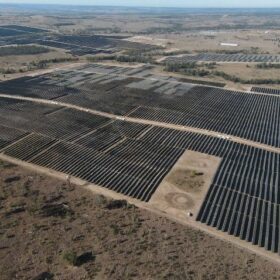From pv magazine global
Sodium-ion batteries are a popular subject for scientists, thanks to their potential to eventually offer similar performance to today’s lithium batteries, without the troubling reliance on rare materials or the risk of fire.
The batteries have seen limited commercial application already, but continue to struggle to match lithium and other energy storage technologies for energy density and long term stability. Now, a team of researchers at the University of Southern Denmark (USD) has made a discovery that it says could increase the capacity of power of the batteries.
The group worked on batteries with a cathode based on sodium iron phospho olivine (NaFePO4), and tested some wisdom gained from better knowledge of lithium-ion technologies. In the lithium equivalent of this battery chemistry, LiFePO4, substituting part of the iron with manganese is known to solve many performance problems with the battery performance and stability. The group in Denmark chose to investigate whether manganese would play a similar role in the sodium battery chemistry, with positive results.
“Similar effects have been seen in Li-ion batteries.” says Dorthe Bomholdt Ravnsbæk of USD’s Department of Physics, Chemistry and Pharmacy. “But it is very surprising that the effect is retained in a Na-ion battery, since the interaction between the electrode and Na-ions is very different from that of Li-ions.”
The group’s results, published in Applied Energy Materials, show that, depending on the configuration, replacing 10-20% of the iron in the cathode with manganese served to stabilize the solution and even led to a complete continuous solid solution transformation covering the entire charge process, and increasing battery capacity by more than 15%.
Ravnsbæk noted that making the sodium-ion batteries small enough to compete with commercial lithium-ion technologies remains challenging, so it may be a while before we see them powering mobile phones or electric vehicles, but the technology could already be viable for stationary storage applications.
This content is protected by copyright and may not be reused. If you want to cooperate with us and would like to reuse some of our content, please contact: editors@pv-magazine.com.








Makes one wonder if the NaMnFePO4 could also be made with NaTiFePO4 and be a more rugged longer lasting battery chemistry? The lithium titanate (LTO) battery is not energy dense like other chemistries, but at 2.3 to 2.4VDC they require more batteries and more space, yet have deep discharge properties and charge/discharge cycles on the order of 20,000.